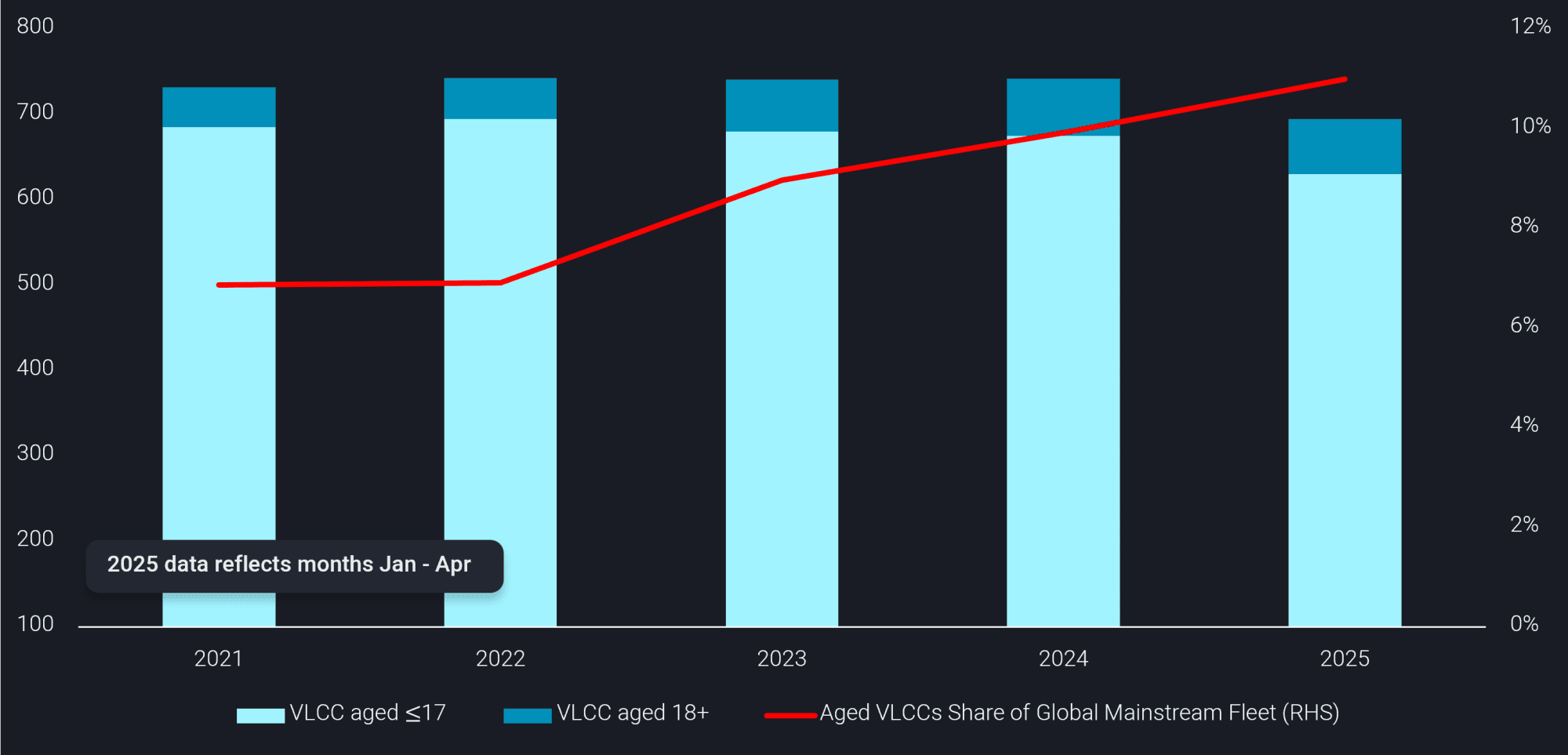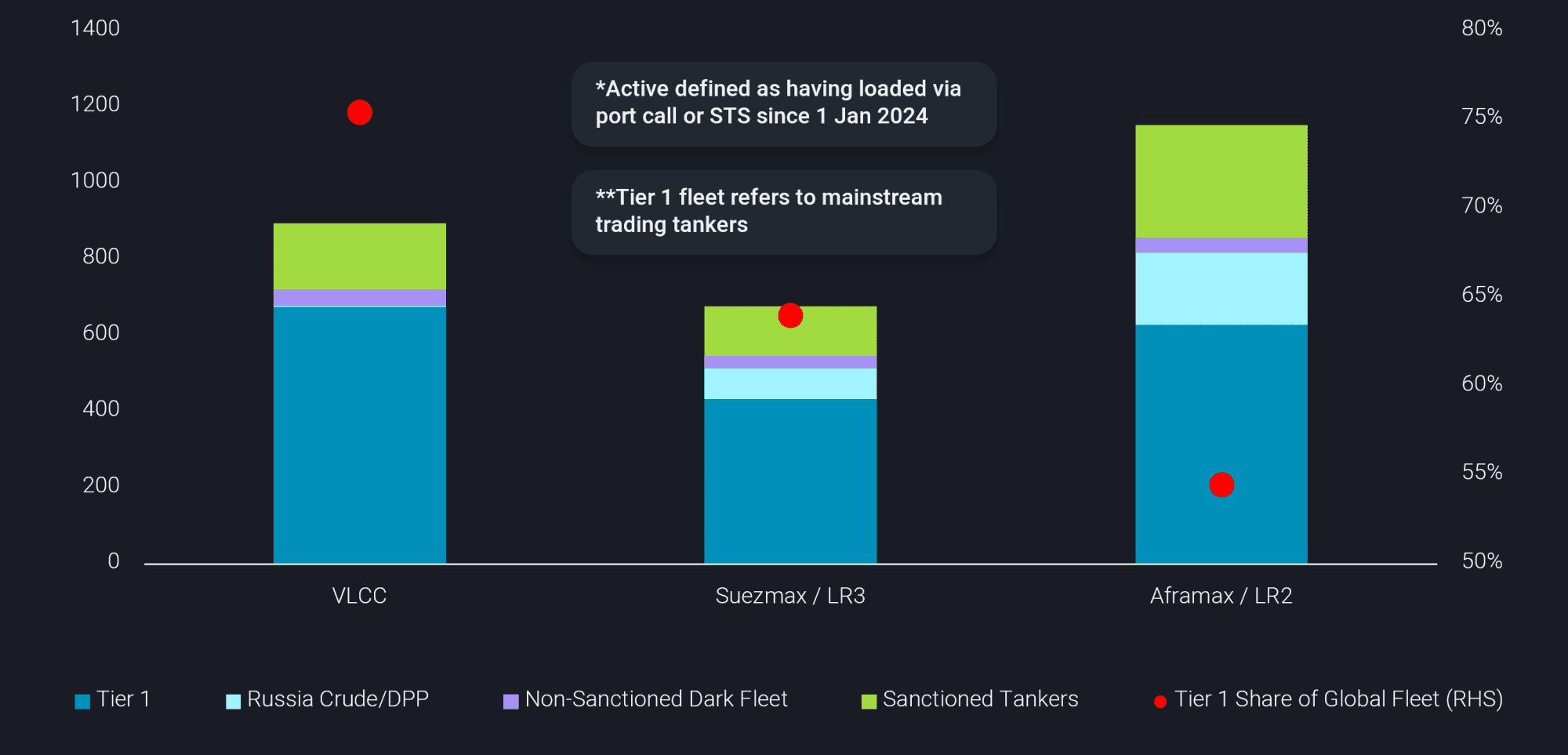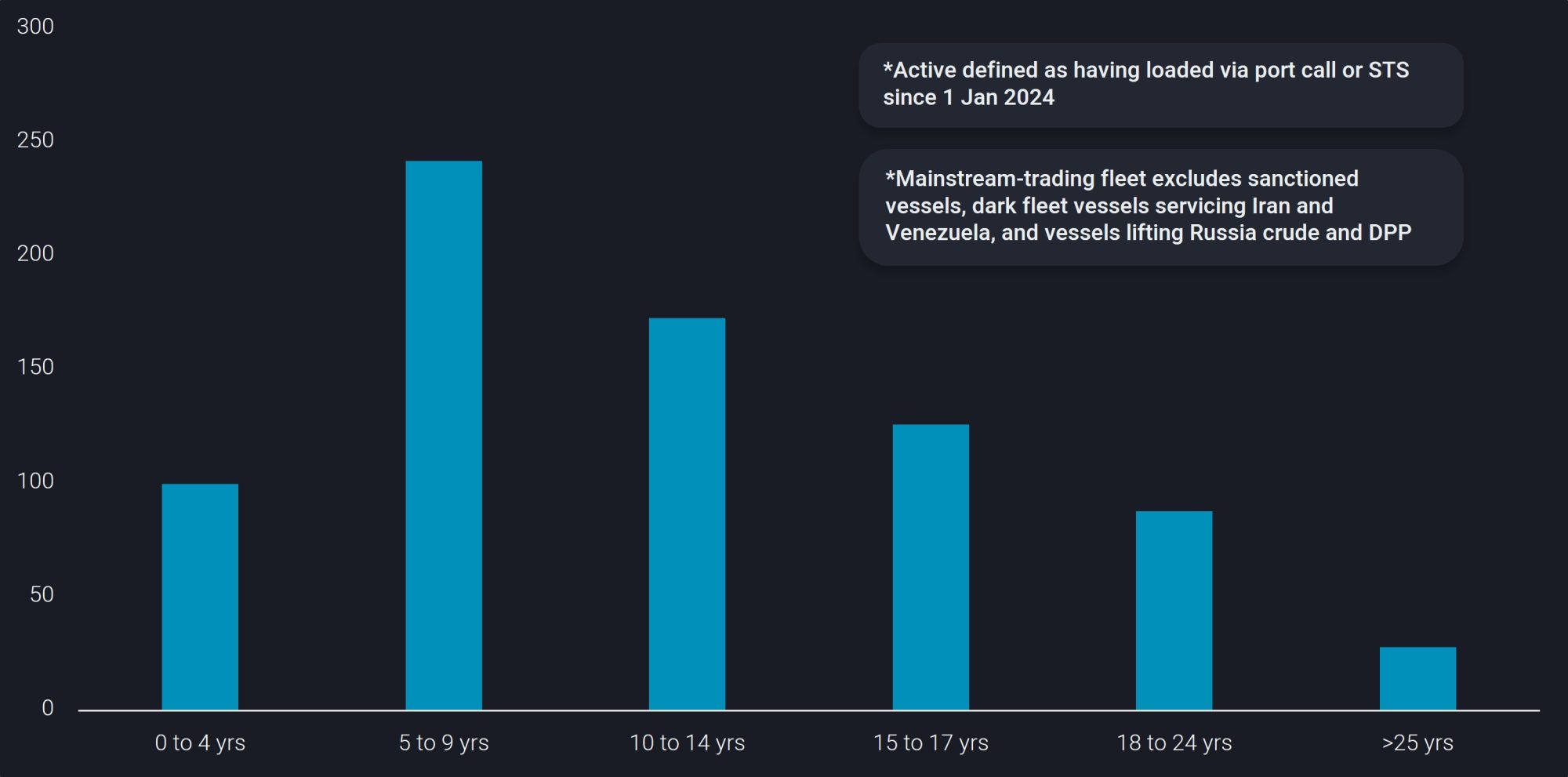Ageing VLCCs are an unlikely source of support to market for now, but could be squeezed out in the near future
The utilisation of ageing VLCCs is supportive of crude freight for now, but they will soon be squeezed out of the mainstream market into scrapping or servicing opaque flows
16% of the global mainstream-trading VLCC fleet is aged 18 years and above, and the utilisation of ageing vessels in the mainstream market has been steadily rising. This tonnage has been crucial in servicing crude flows, particularly in the Pacific Basin. With more new-builds scheduled for deliveries and pick-up in scrapping activities over the next few years, these aged VLCCs would be main candidates for scrapping, or new-joiners to the sanctioned trade if all sanctions regimes remain status-quo.
114 VLCCs aged 18 and above continue to be active* in mainstream trade**
The operational performance of ageing VLCCs (18+) is usually inferior to younger vessels, which is one of the key reasons why major industry players maintain chartering policies that favour younger vessels. For instance, older vessels sail at lower average speeds of about 11%, compared to younger VLCCs aged <15 years leading to higher turnaround times, hence limiting vessel availability. In addition, ageing vessels typically require more frequent maintenance, including drydocking every 2.5 years beyond age 15 (Tankers International). Younger vessels could therefore benefit from the periods of shrinkage in effective vessel availability.
Utilisation of ageing vessels in mainstream* markets is continuously rising

Active VLCCs aged 18+ involved in mainstream and non-mainstream trade (no. of vessels)

Global mainstream VLCC fleet split by age range (no. of vessels, LHS) vs. share of VLCCs aged 18+ (%, RHS)
However, the employability of ageing VLCCs have risen in recent years as shipowners of older vessels tend to offer into cargoes at discounted levels. 10% of the global active VLCC fleet last year comprised vessels aged over 18. Low VLCC deliveries in 2023 and 2024 (Braemar), combined with the growing prevalence of a multi-tiered fleet structure, had strengthened the appeal for vessels to join the opaque trade (Russia, Iran, Venezuela).
This diversion has helped ageing vessels maintain and grow their share in both the mainstream and opaque markets. Additionally, this is a reflection of the willingness of industry participants to hire older vessels in the face of constrained vessel supply.
Ageing VLCCs predominantly operating in the Pacific Basin, especially important for intra-Southeast Asian flows
The aging mainstream VLCC fleet have their operational footprint primarily in the Pacific Basin. The near absence in utilisation of aged vessels in the Atlantic basin suggests stricter age-related chartering regulations, concentrating ageing tonnage within the Pacific.
Mideast Gulf, Southeast Asia, and the Red Sea Gulf of Aden account for 70%, 14% and 12% of all mainstream ageing tonnage respectively. Though, ageing vessels play a limited role in Mideast Gulf crude outflows, accounting for 8% of total mainstream VLCC sailings from the region.
On the contrary, the majority of SE Asia crude freight voyages (85%) happened on the ageing VLCC fleet. In SE Asia, the fleet has been largely deployed to service intra-regional crude flows. These routes are short-haul, but tend to involve STS operations.
Pick-up in VLCC deliveries could pose the dilemma of scrapping vs. joining the opaque trade

Share of Tier-1 trading vessels in the global fleet
With around 80 VLCCs slated for delivery over the next three years (Braemar), the nominal fleet capacity is set to expand by approximately 11%. The addition of younger and more efficient tonnage in the near future would likely exert downward pressure on rates.
The remaining 17% of the currently active mainstream VLCC fleet aged between 15 and 17, and the 16% aged 18+ would likely face operational deterioration within the same time window. This raises the likelihood of increased scrapping, particularly when charterers will have a greater optionality of younger, well-maintained, and more fuel-efficient tonnage.
For many of these ageing vessels, an alternative path lies outside of mainstream trade. The number of aged VLCCs trading in opaque markets has grown rapidly, with the fleet size more than doubling since 2021. With a multi-tiered freight market, the ageing segment of the mainstream VLCC market has the most incentive to defect into servicing sanctioned flows. However, a breakthrough in the US-Iran Nuclear Deal could lift sanctions levied against Iran crude exports, curbing demand for dark fleet tonnage, and limiting employment opportunities within sanctioned trade.

